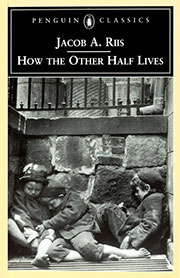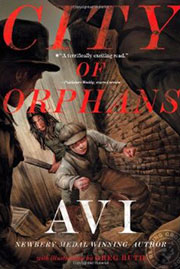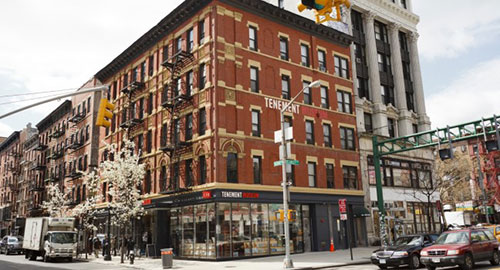In the late Nineteenth Century, and early Twentieth Century, because of its proximity to Ellis Island, one of the major landing sites for immigrants, thousands upon thousands of people came to New York City. As it happened, many of these people found tenement housing in Manhattan, around and about what is called the Lower East Side. In fact, it was where my ancestors first settled. (As a college student, I found cheap housing there, too) It was here theses immigrants—millions of them—became Americans.
 For the most part these immigrants were poor, very poor. New York City, however, was home to fabulous wealth. A contemporary book, How the Other Half Lives, documents this dichotomy.
For the most part these immigrants were poor, very poor. New York City, however, was home to fabulous wealth. A contemporary book, How the Other Half Lives, documents this dichotomy.
When I read accounts of this time, I was struck by the constant mention of masses of children who seemed to have lived on the streets. They were there because immigrant families often had large families, yet lived—at best—in tiny quarters. There was nowhere else for the kids to go, but on the streets to play and work.
 Being children, being on the street, being at work, they were often much more quickly assimilated into American culture and society than their parents were. They had parents, but in some respects, they were very different from their parents. Hence the title, and the story, City of Orphans.
Being children, being on the street, being at work, they were often much more quickly assimilated into American culture and society than their parents were. They had parents, but in some respects, they were very different from their parents. Hence the title, and the story, City of Orphans.
It was also a time of mass-marketed books for young people. Detective stories were quite popular. Indeed, the working title for this book was, The Boy Detective.
Having become interested in all of this, and deciding to write a novel about this time and place, I was fortunate to visit the Tenement Museum in New York City. It is a fascinating place, preserving as it does, the kind of life about which I was learning.
Finally, if you visit the Lower East Side you will find much of it very much as it was a hundred and some years ago.
Simply put, it was hard to resist writing a novel about this time.

1 thought on “Life on the streets”
Avi, I love your historical fiction because it opens my eyes to conditions in other times and places. ( I’m 64.) I just finished writing a novel for young teens and found research about the past (blues trumpet players of the fifties and sixties) tricky. I keep thinking I just don’t know enough about it yet.
Crispin is a work of art, and I’m sure City of Orphans is, as well. I’ll go buy it now.